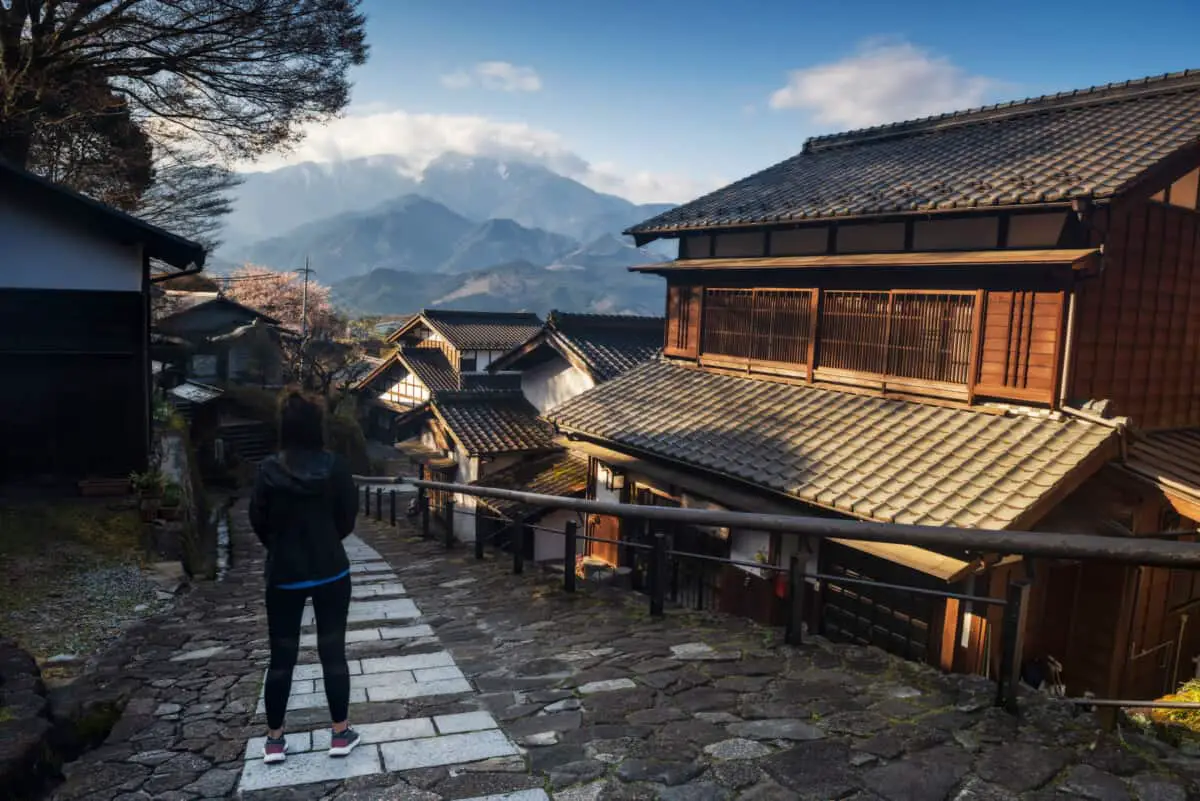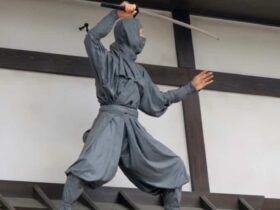The Kiso Valley, or Kiso-dani (木曾谷), is a step back into the time of the Edo Period, with rugged forests and rural terrain. Located in the Nagano Prefecture, it’s one of the oldest and most preserved areas of an old merchant trail, the Nakasendo.
The place burgeons with historic towns and the 2nd largest volcano, Mount Ontake.
The area sits amid the upper part of the Kiso River, creating a valley that comes shaped like a V.
It’s about 36 miles long (60 kilometers) and runs along the river as it flows north-northwest to south-southwest into the Gifu Prefecture.
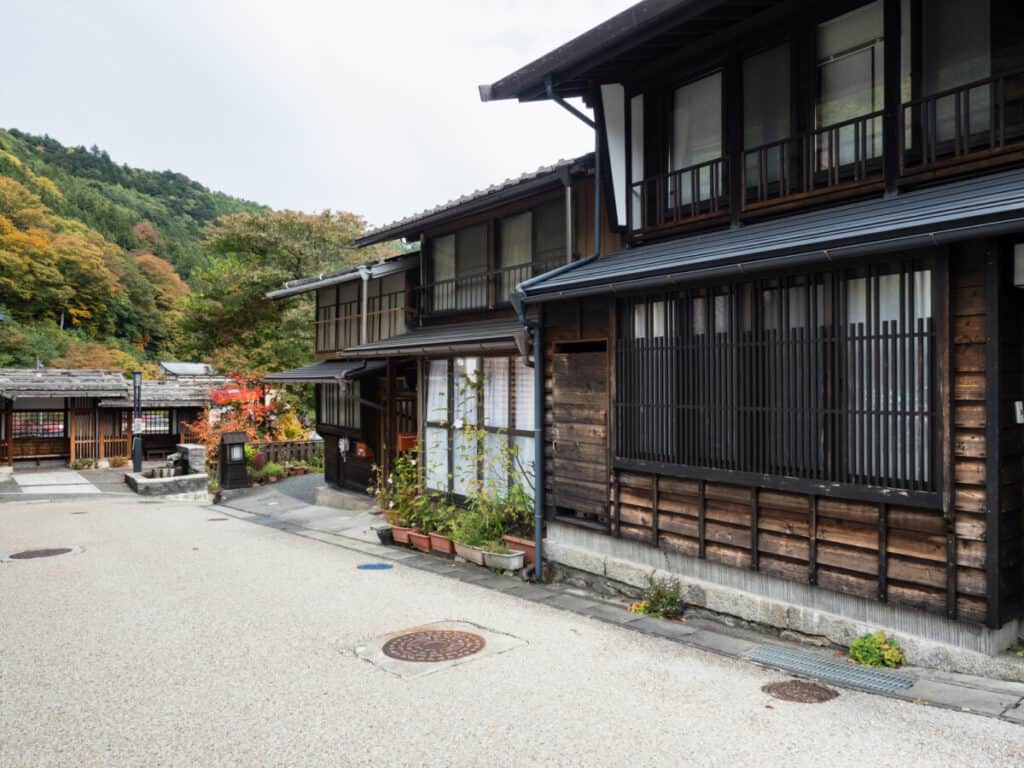
Kiso Valley Overview
- Location ; Mount Ontake
- Otaki Village
- Gorgeous Lakes ; Breathtaking Rivers
- Forestry ; Logging
- Shogun Rule to Today
- The Nakasendo Trail
- Historic Time Stamp
- Post-Towns along the Nakasendo Trail
- Narai
- Kiso Hirasawa
- Kiso Fukushima
- Getting to Kiso Valley
Location ; Mount Ontake
The Central Japanese Alps sit to the east of the valley while Mount Ontake or Ontake-san (御嶽山) is on the west.
This mountain is Japan’s 14th largest in size but 2nd largest as a volcano next to Mount Fuji. Mount Ontake stands nearly two miles high (10,062 feet or 3,067 meters).
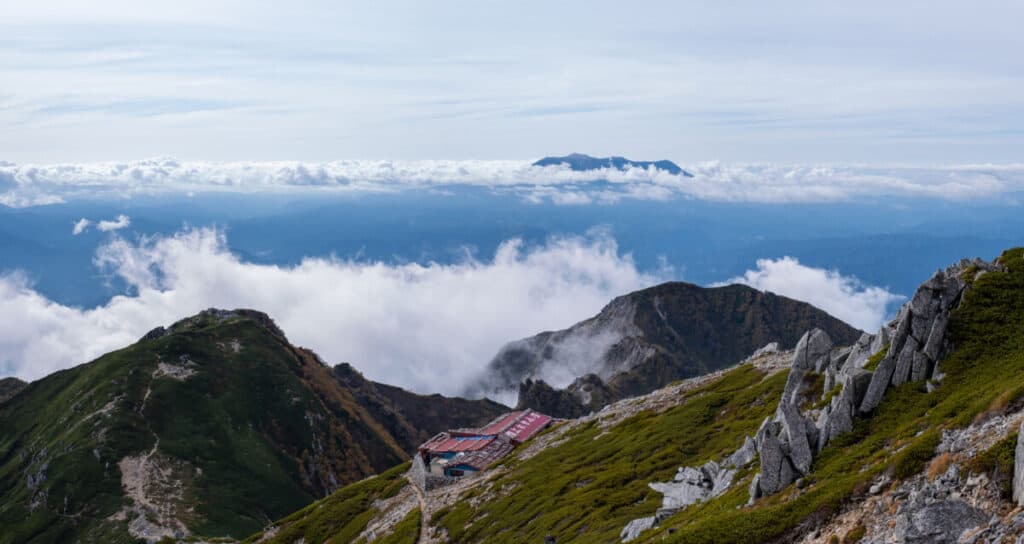
It’s about 125 miles (200 kilometers) west of Tokyo and 62 miles (100 kilometers) northeast of Nagoya. On the mountain, there are five crater lakes amid some of the most beautiful and breathtaking waterfalls.
It’s home to the highest mountain lake in Japan, called Ni no Ike (二ノ池), and sits at 9,531 feet (1.8 miles or 2,905 meters).
There have been a handful of eruptions over the years that include a serious one in October 1979 with two minor explosions in 1991 and 2007. However, on September 17th, 2014, a level 3 eruption occured unexpectedly.
Mount Ontake Location Via Google Maps
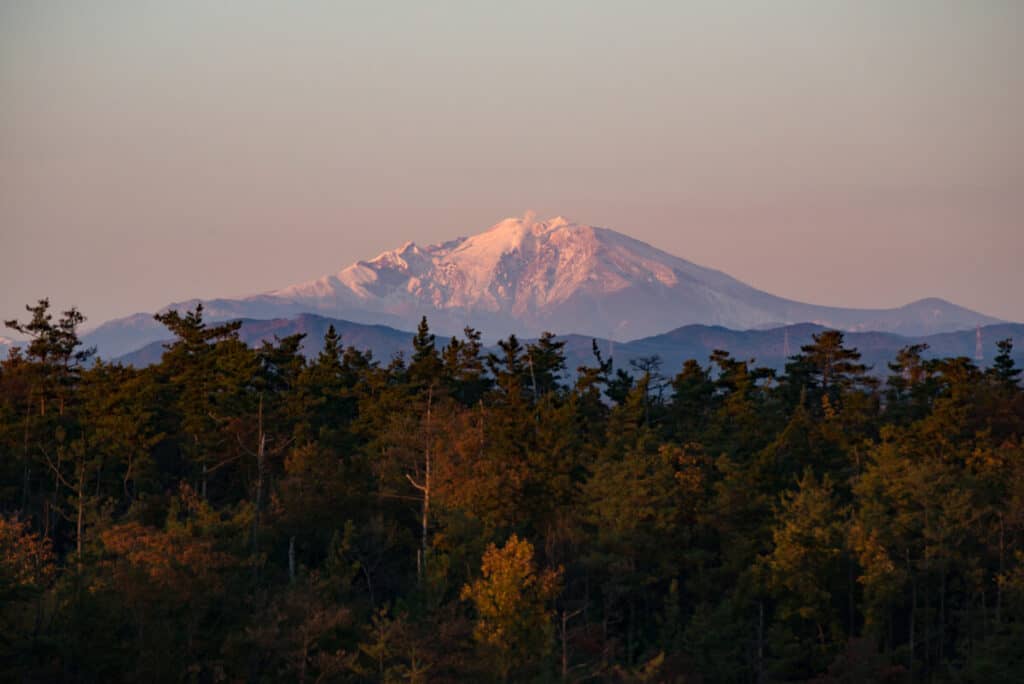
This is because this particular volcano can strike the area from hydrothermal explosions, rather than typical earthquakes that plague other active volcanic areas of Japan.
Otaki Village
Because of Ontake’s power as an active volcano along with its beautiful nature and wildlife, Ontake is considered to be one of the most sacred and holiest mountains in Japan. Here is the Pilgrim’s Way, where the faithful can take the long and arduous trek up to the summit of the mountain which starts at Otaki Village.
This is a magical place filled with moss-covered shrines, endearing waterfalls, and surrounded by the quiet of the forest.
Otaki Village Official Website
The holy people residing there have developed their own amalgamated religion combining Shintoism, Buddhism, and ancient Shamanism. Here they see the mountain as a living, sacred being.
They have a series of rituals, ceremonies, and holy sites where pilgrims come to connect to nature and spirituality.
Many artists, writers, and well-known persons come to get inspiration for their craft while undergoing trances and other types of ceremonies.
Gorgeous Lakes ; Breathtaking Rivers
Kiso also has some of the most gorgeous lakes and rivers throughout the whole of Japan. Indeed, there’s a seemingly endless water flow throughout the region that’s pure and clean.
These waterways can range in color from deep emerald green to turquoise and even crystal clear. Lake Ontake and the Atera Ravine are two popular recreation areas.
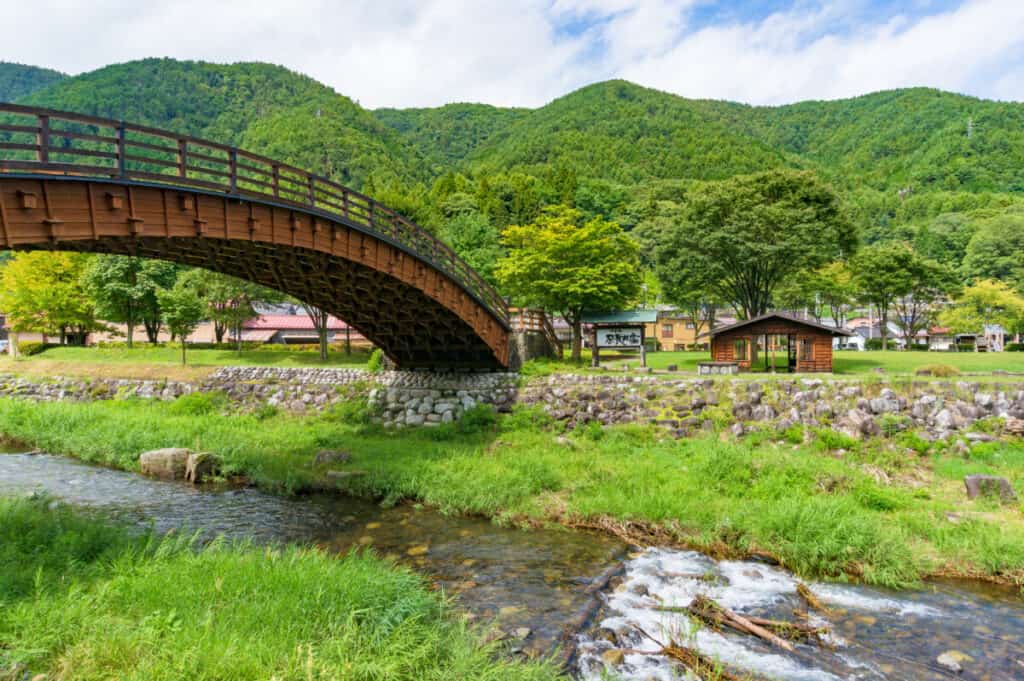
Forestry And Logging In Kiso’s Past
Because the land is rough and hilly due to the steep mountain climbs, there is very little farming and agriculture. Whatever can undergo cultivation is visible along the narrow flatland of the Kiso River. Forestry was big in the area from the Edo Period until the 1980s.
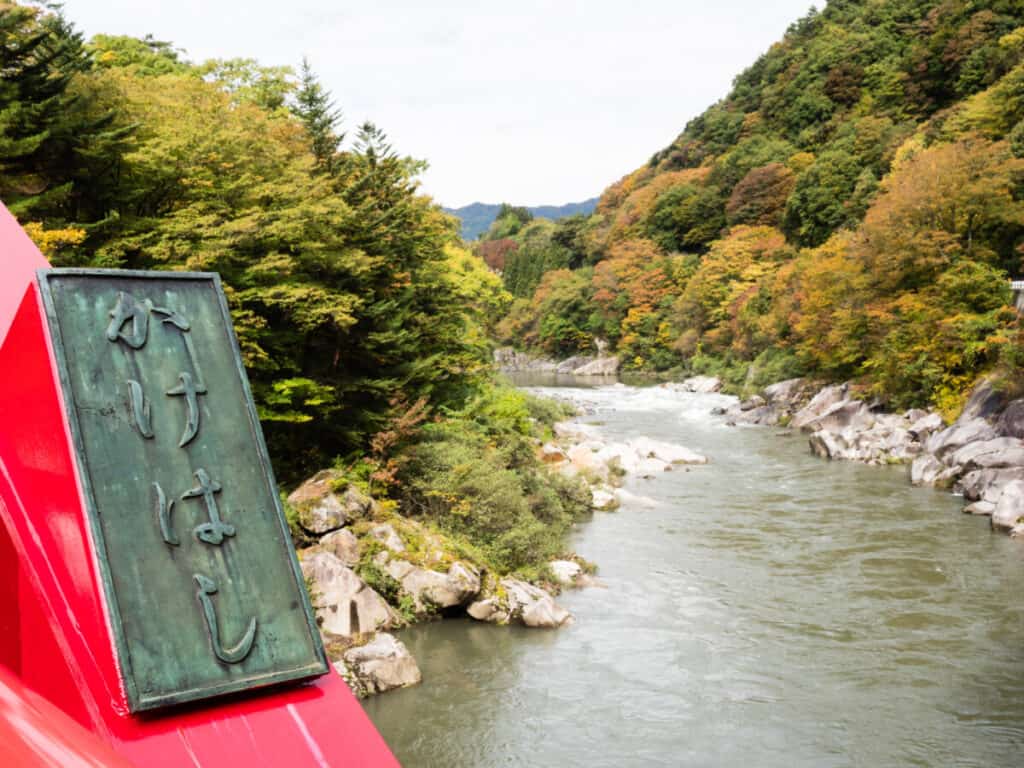
Shogun Rule to Today
During Shogun rule, forestry became important and rapidly developed expansion along with the excavation of the Kiso River.
This allowed for mass transport of lumber between cities for shogun palaces and other types of buildings, bridges, and gateways.
However, even at this time, deforesting the region began to create ecological issues. Therefore, the Owari-Tokugawa clan employed conservation and control policies.
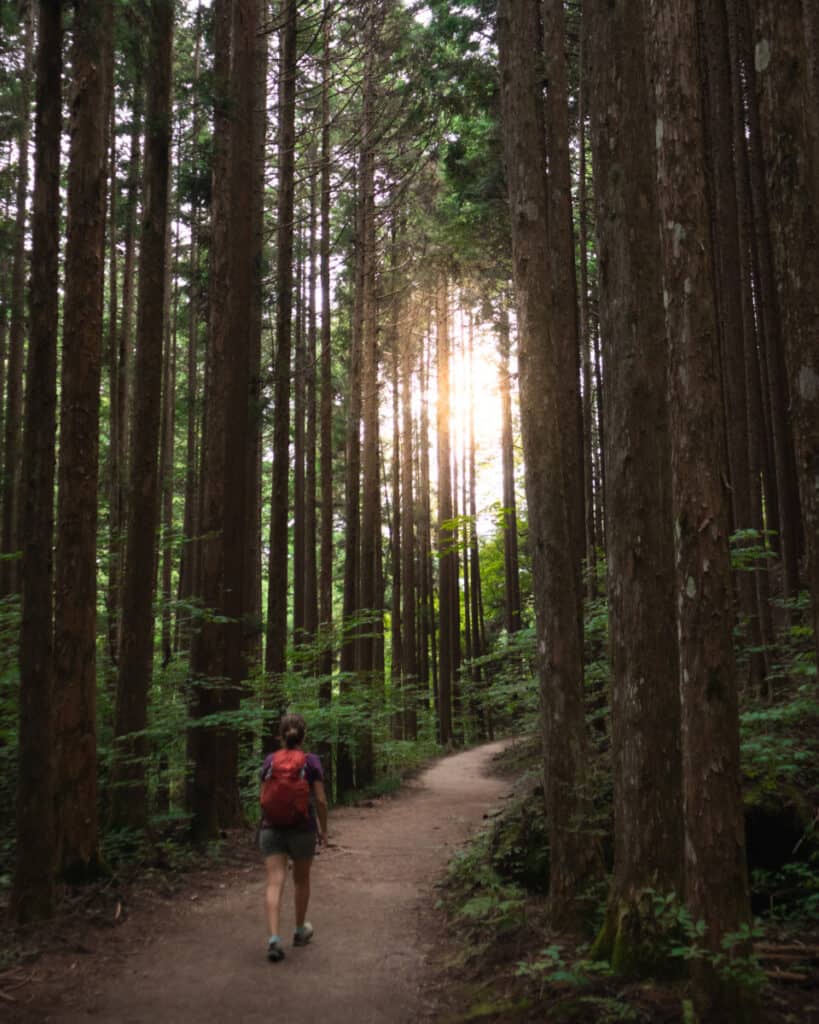
This led to the development of vast Hinoki Cypress forests. Hinoki is a tree prized for its lumber by emperors because of its strength and unending durability.
Once the Meiji Restoration ended, the state-owned the forest. Then, in 1889, it became a royal estate as a forest preserve. In 1947, this became part of the Forestry Agency and turned into a national forest.
However, the 1958 Isewan Typhoon destroyed many of the trees. Therefore, forestry has never quite been the same as its peak during the Edo Period.
The Nakasendo Trail
The Nakasendo Trail is one of the top attractions of the Kiso Valley. From the beginning years of the 1600s and well into the later parts of the 1800s, this was a highway that was a vital throughway.
It connects Tokyo to Kyoto, two important Shogun areas at the time.
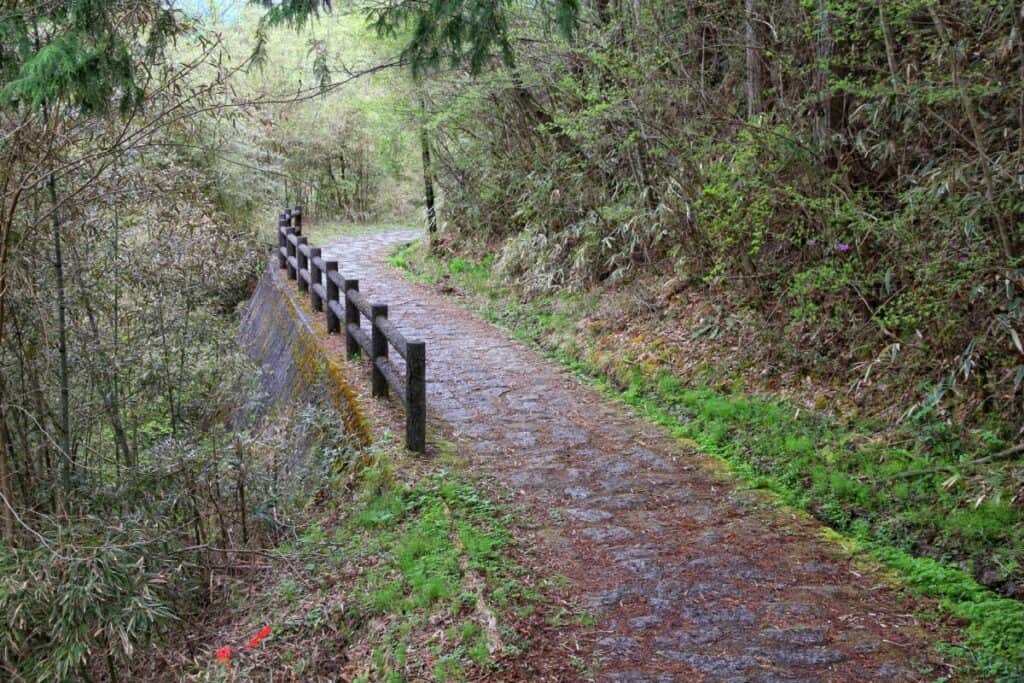
Historic Time Stamp
Today, many parts of the Nakasendo Trail are very much like the way they were during the Edo period. However, much of the area’s history had many paths and trails to connect the former provinces of Shinano and Mino. This made it a difficult route because of the steep climbs of Mount Ontake.
At one time there was the Kiso no Yamamichi (岐蘇山道) in 702 AD but the name changed to Kisoji no Michi (吉蘇路) by 713 AD.
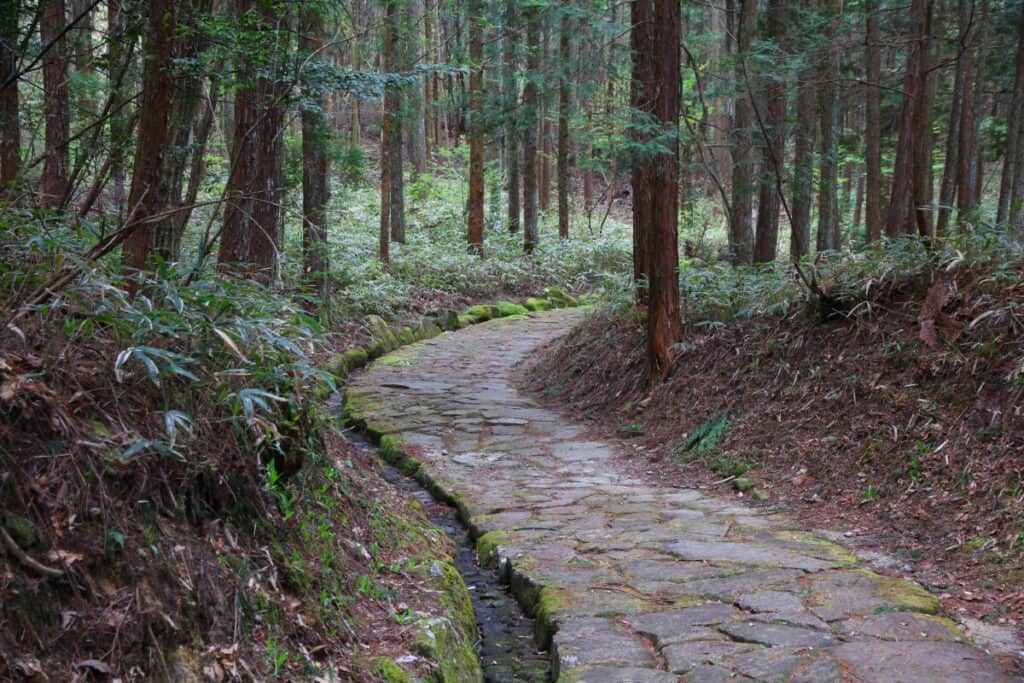
The Nakasendo is a Trail based on these previous layouts, but it’s what propelled the creation of 11 post-towns along the route. Since the Meiji Restoration, trains began cutting through the valley.
While this made travel much easier, many locals feel it has destroyed some of the pristine, untouched nature and history of the area.
Post-Towns along the Nakasendo Trail
During this earlier time, 43½ miles (70 kilometers) traversed the entire Kiso Valley, including its 11 post-towns. It stretched from Niekawa in the north all the way to Magome in the south. These places provided entertainment and repose for travelers and merchants.
Others such as Narai and Tsumago (including Magome) sell a host of wooden products made from the abundant cypress trees. Even the old streetscapes comprise this wood.
Magome Location Via Google Maps
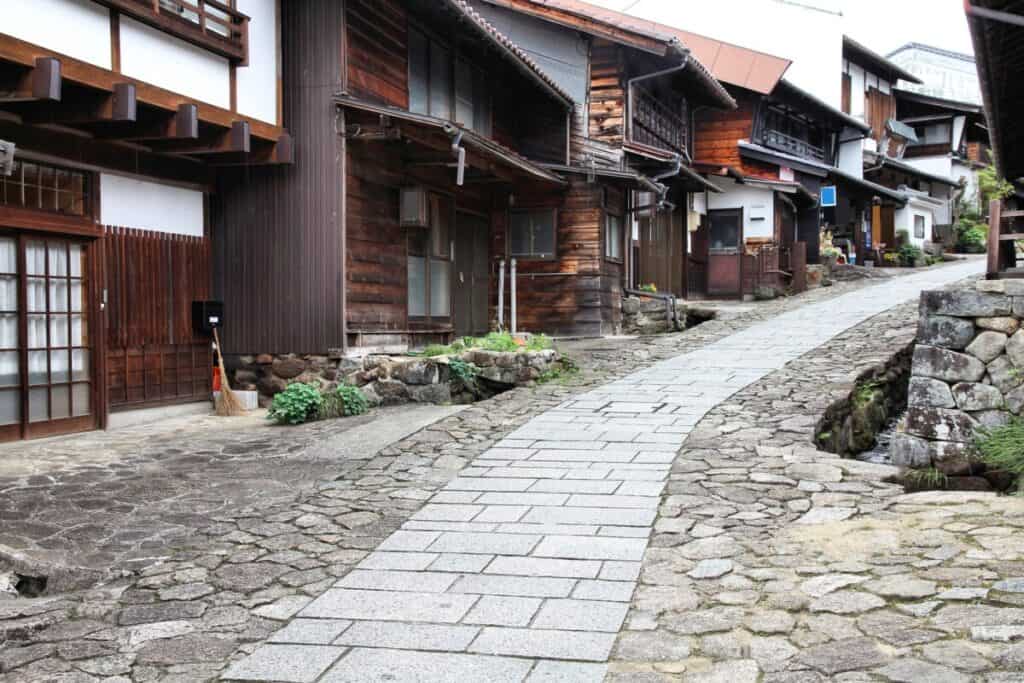
Narai
Narai (奈良井) sits in the north-central end of the Kiso Valley and is notable for its wealth, historic preservation, and size compared to other post-towns in the vicinity.
Its main road is over a ½ mile (one kilometer) long with stunning views at nighttime from the lantern-lit windows and buildings.
Sometimes called “Narai of a Thousand Houses” during the Edo Period, this main road lines with preserved and historic homes.
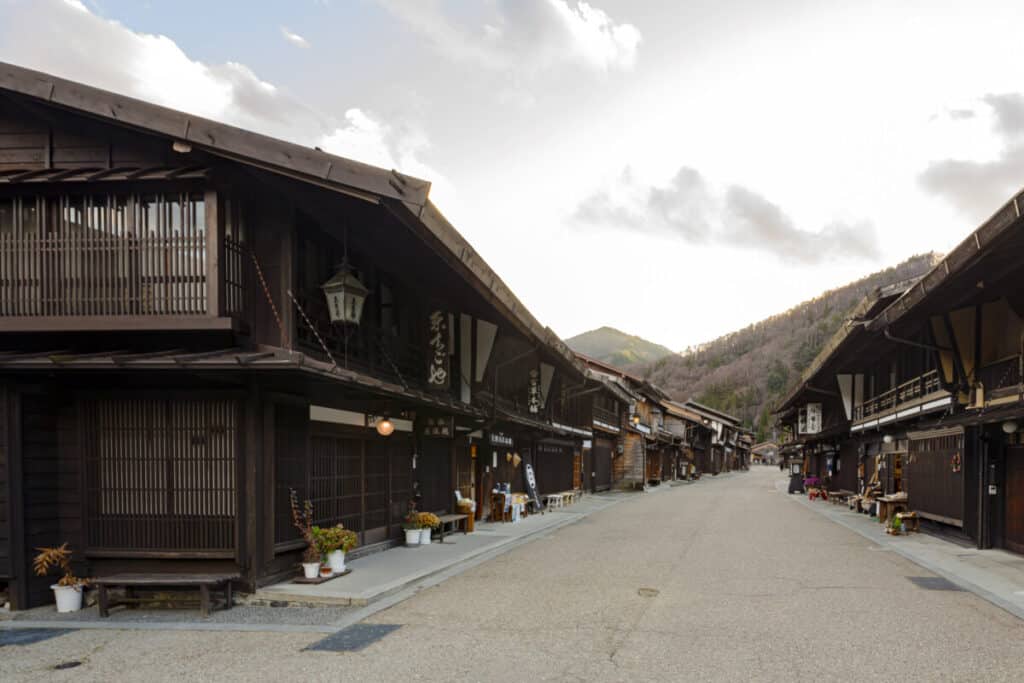
These have stood for centuries and some are available for public viewing. Others provide restaurants and souvenir shops.
Kiso Hirasawa
Kiso Hirasawa (木曽平沢) is a small village just outside of Narai. It has a special history of its own also dating back to the Edo Period.
Over the centuries, it has become famous for its specialty lacquer wares for which Japan is famous. These are beautifully crafted dishes and bowls designed in such a way as to enhance the flavors in food thru visual appeal.
Kiso Hirasawa Location Via Google Maps
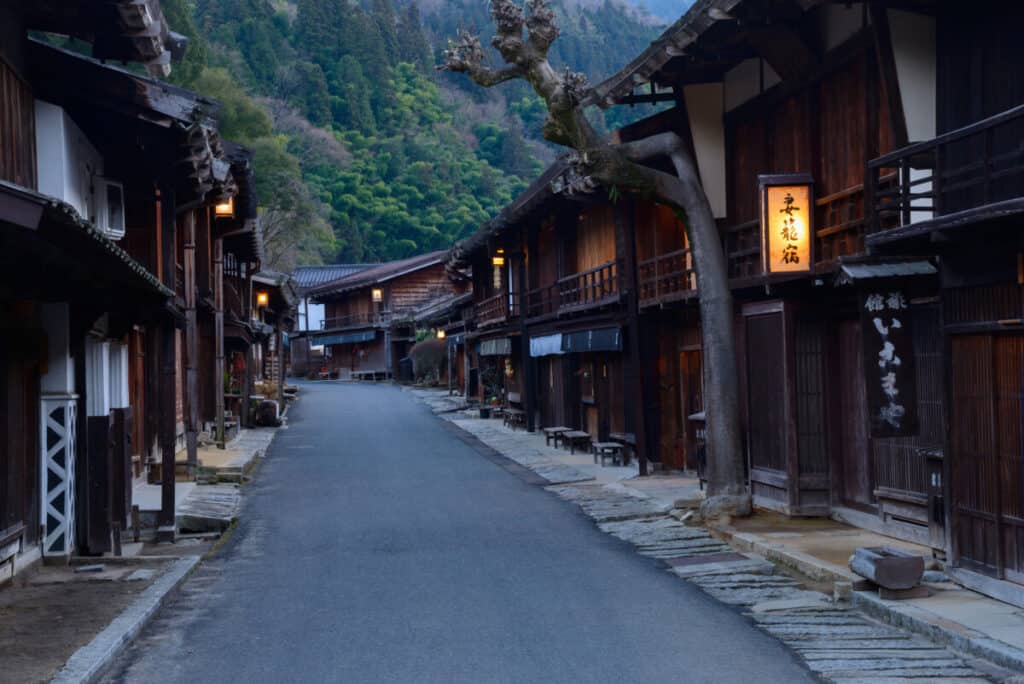
Kiso Fukushima
In the central part of the Nakasendo Trail, is Kiso’s biggest town: Kiso Fukushima. During the Edo Period, it was one of the main Shogun checkpoints of the Tokugawa clan.
Kiso Fukushima Location Via Google Maps
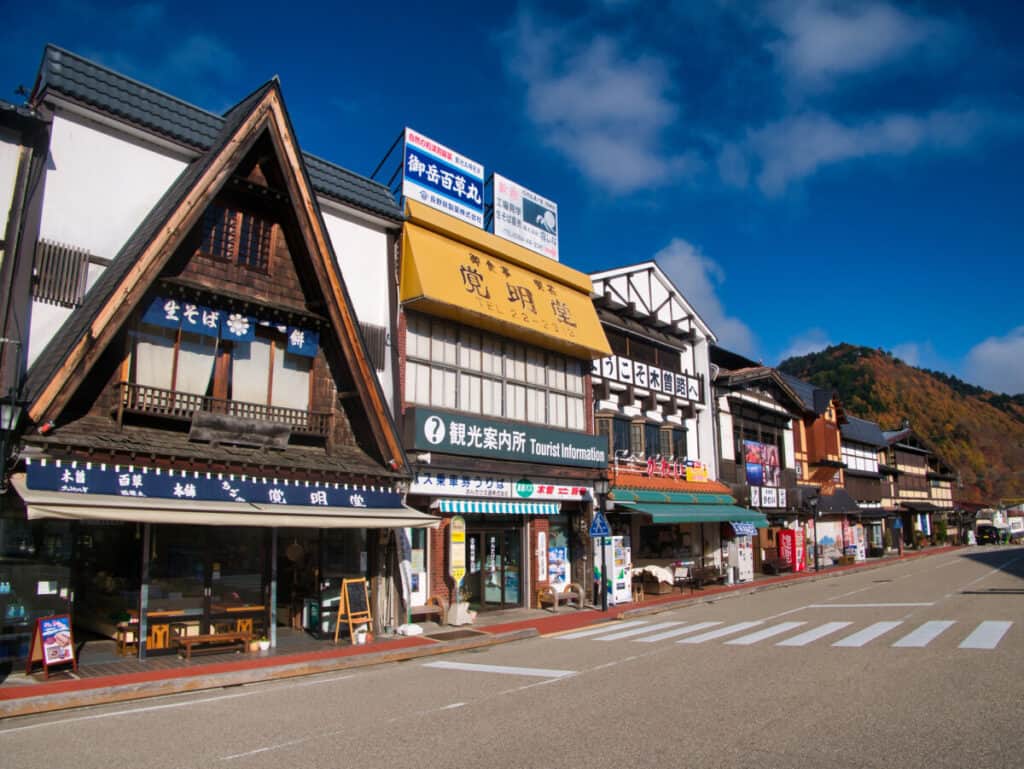
They kept tight controls over people and their movement along with their guns and goods, which added to the already difficult journey.
Because of its central location along the Nakasendo and resting at a short distance from Mount Ontake, it was a major hub for travelers.
Surrounded by emerald forests, Kiso Fukushima reflects its historic past, giving a traditional feel with plenty of museums and several Zen Buddhist temples; the most famous being the Kozenji.
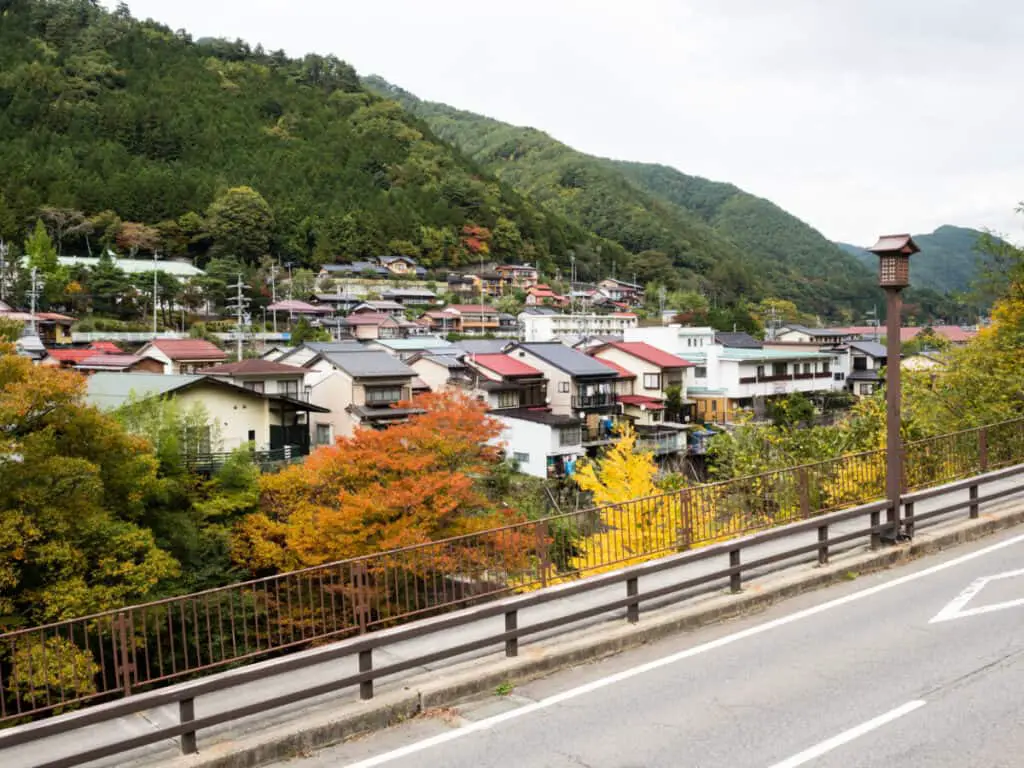
Here is where you will find two famous and long-held traditions: horse breeding and food. The Kaida Kogen is a breeding highland farm with grazing horses called Kisouma.
These are beautiful and Japan’s only native horses. The other highly prized tradition in the production of some of the finest sake and soba noodles in the entire prefecture.
Getting to Kiso Valley
You can reach the Kiso Valley via the Shinano Express. It runs the entire breadth of the valley and the journey itself provides breathtaking views, which is only a sample of what’s in store once you reach your destination.
If coming from Tokyo, you can take the JR Azusa to Shinjuku Station. You’ll go toward Matsumoto and take the transfer to Shiojiri via the Shinano Express.
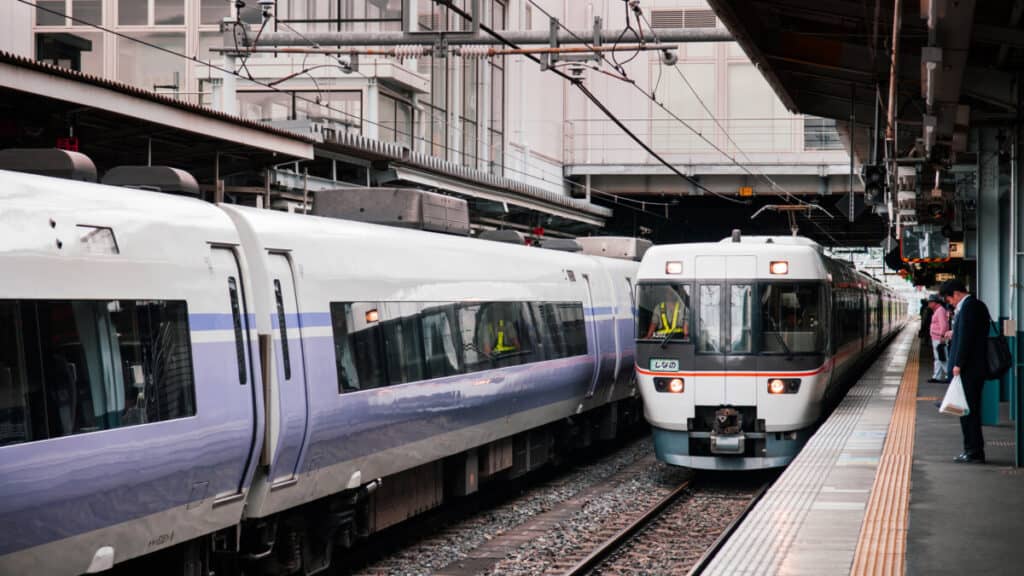
Alternatively, you can take the Tokaido-Sanyo train from the station in downtown Tokyo and then make your transfer to Nagano City or Matsumoto.

